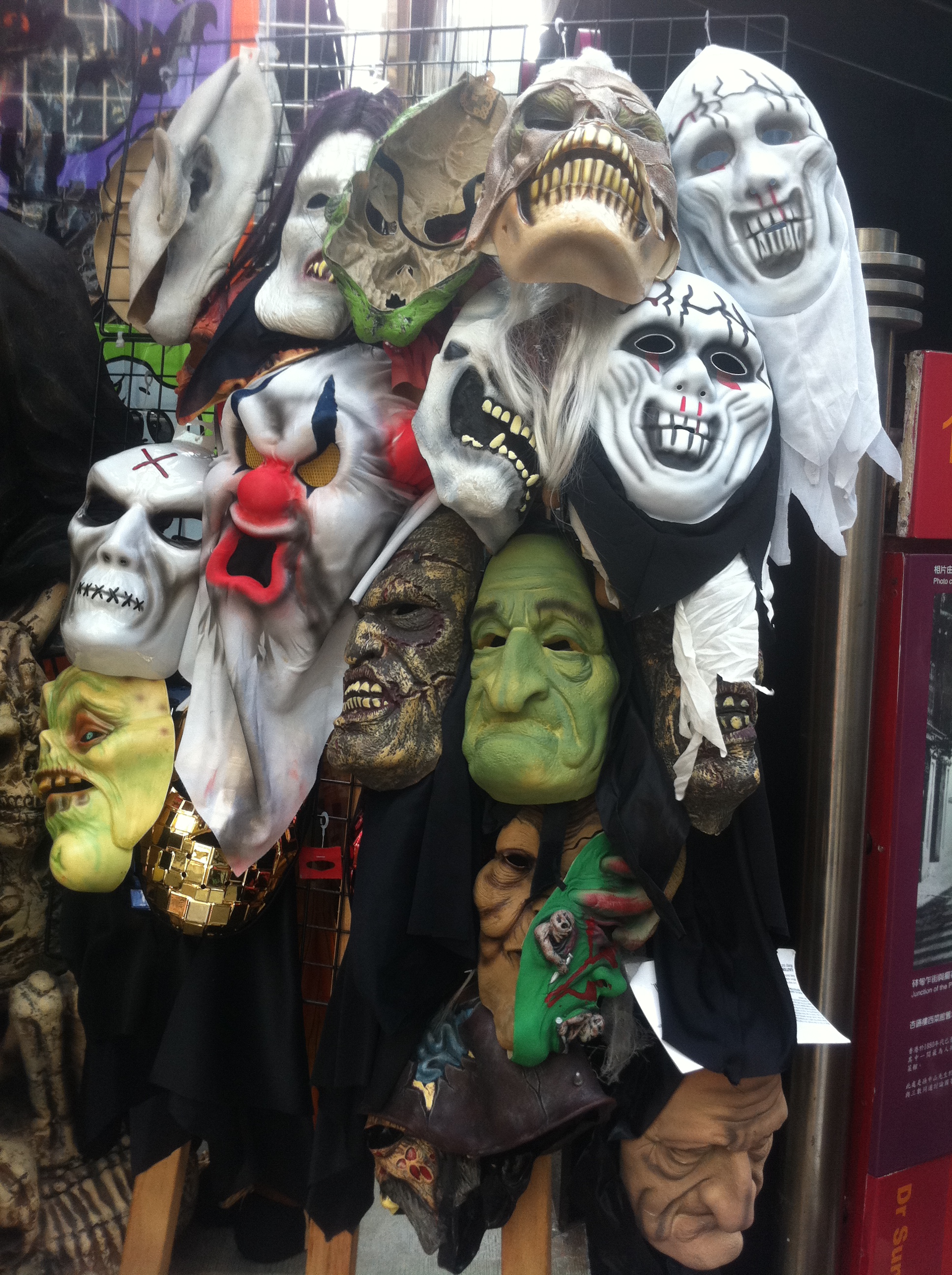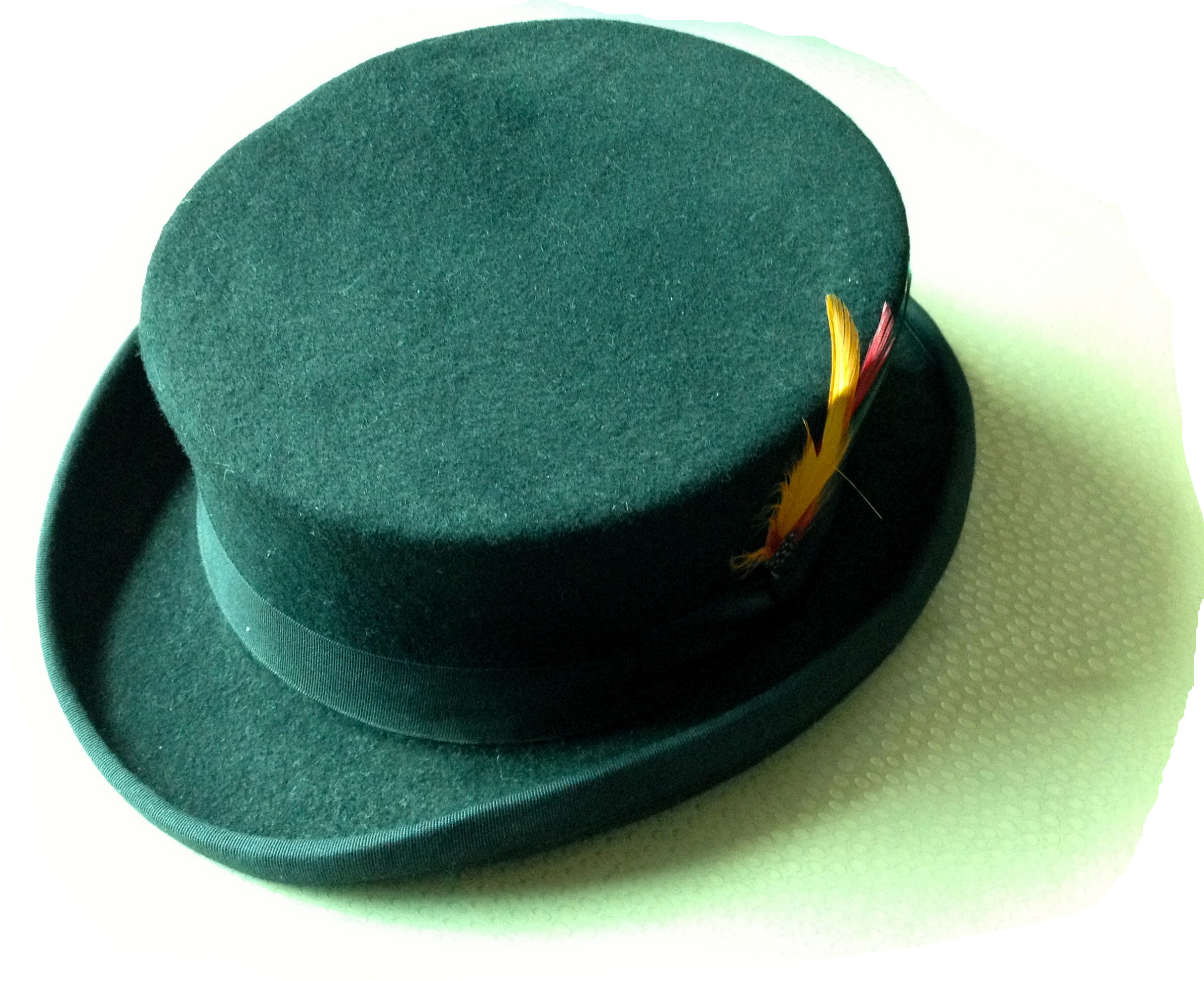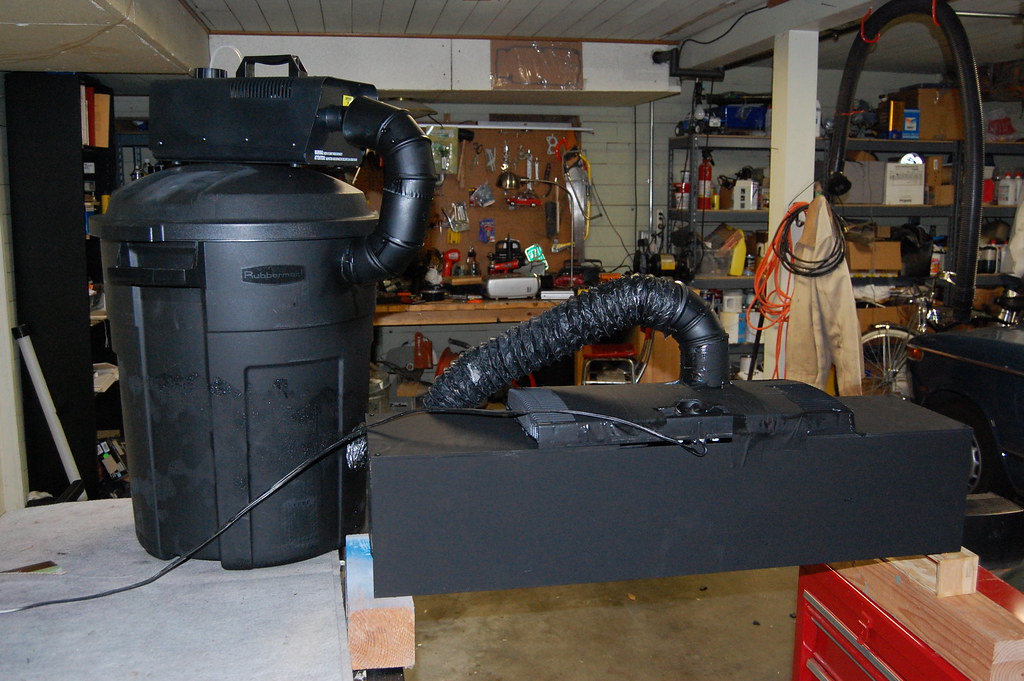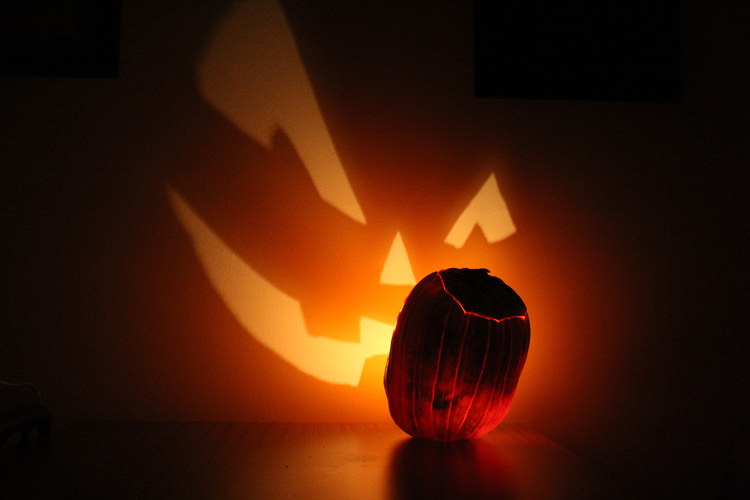By Michael Cieslak
Considering everything we have covered so far, I can hear you ask “Zed, what else can we possibly have to cover?”
Well, voices in my head, allow me to first thank you for the lead-in. While sight may be our primary way of interacting with our environment, it is not the only one. You should not be at all surprised to discover that there are ways to incorporate other senses into your haunt as well, which is what we will be focusing on in our final installment.
We briefly touched on the often underutilized (perhaps with good reason) sense of smell when we talked about fog machines and fog juice additives, but what about the other senses? A trip through any haunted attraction will reveal that touch can be used to good advantage, for example via curtains to be pushed through, dangling things from above to brush against you, and even the cool touch of air and mist. This may not be practical for the smaller home haunts, especially when dealing with young trick-or-treaters, but there have been a number of mist-producing props that have appeared in brick and mortar stores over the past few years.
Sound Effects — A much easier sense to work with, however, and one which can easily control emotions, is sound. There is a very good reason that horror films have soundtracks. Music can be used to set a mood, to build tension, or to enhance a scare (whether a real one or a fake jump scare). This holds true for home haunts as well. The trick is matching the music to the mood of your haunt. Your death metal collection may be what pops into your mind when you think Halloween, but it might clash with a traditional Gothic theme. For this, think of chamber music, pipe organs, and the like.
One thing I would shy away from would be the Halloween themed party music compilations. If you spend any time in a brick and mortar Halloween store you will know what I mean. Your shopping experience will be done to the beat of “Thriller,” “Somebody’s Watching Me,” and the theme from Ghostbusters. These songs are fine to play if you are hosting a party, but they will do nothing to enhance the SQ of your haunt. There is just nothing scary about Bobby Pickett and the Crypt Kickers singing “The Monster Mash.”
 When I have music playing at my haunt, it is almost always Midnight Syndicate
When I have music playing at my haunt, it is almost always Midnight Syndicate. Their CDs are available online and from many Halloween retailers. Each of their albums has a different theme, so it is easy to pick the one to match the props you have set up. My personal favorites are Born of the Night
, Realm of Shadows
, and Gates of Delirium
. Unfortunately, these are older albums and are no longer being produced, but it still may be possible to find copies, if you know where to look. Many of the best tracks from these albums are compiled on Out of the Darkness.
Some of the material by Midnight Syndicate contains sound effects woven into the musical tracks. There are also plenty of CDs available which feature spooky sounds, as well as collections on-line. There are even apps to generate different sounds. I am a big fan of appropriate sound effects. Once again, it comes down to matching the sounds to the theme of your haunt. Fifteen minutes of zombies shuffling and moaning for brains may be creepy, but if your haunt is free of the walking dead it just doesn’t fit.
I recommend making custom tracks of sound effects. Put them on an MP3 player hooked up to a set of small speakers (again, placed somewhere safe from the elements, interference, and theft) with enough blank space in between to make sure they are not always going off. Remember, your visitors will think these sounds are great, but you are the one that has to listen to them all night long.
If you are interested in making your own sound effects, I recommend Audacity, or a similar software. Audacity is a free but powerful little program which has a lot of audio manipulation tools built in. For a few years I had a werewolf pen as part of my haunt. The first year I did nothing to augment the wire-form props. The second year I added sound: I recorded my dog’s play growls while we played tug-of-war, then dropped the pitch, increased the reverb, and tweaked a couple other things. That year people swore that the werewolves were moving; in actuality, they were decidedly stationary.
I noted above that you have to remember that you will have to deal with whatever sounds you put in your haunt, so it is important to gauge your own tolerance with them. You are the one who will be around the haunt most often, and you don’t want to be scaring yourself or driving yourself crazy for the duration. You will also have to deal with the lights, the fog, and everything else. This is the primary reason I do not use strobe lights; they give me headaches. Pro-tip: make sure that you are not down-wind of your own fog machines.
Which brings us to the question of how active you plan on being in your home haunt. If you are setting up a large maze that people will be walking through, you may have to recruit some people to help populate it. How do you doll them up?
There are two answers here, which can be combined to various degrees: make-up and masks. Each has its good and bad points. Masks can restrict motion, limit vision, and can be unbearably warm, even on the coldest of nights. Make-up overcomes many of these problems, but lacks permanence and can cause allergic reactions.
 Uncle Zed’s recommendation is to figure out how much running around you are planning on doing and go from there. This is not to say that you can’t run around while wearing a mask, just be sure you are familiar with the surroundings. Generally speaking, there is an inverse relation between the amount of moving you plan on doing and the visual limitations you will want to impose upon yourself. The plus side of some masks is that they do offer a little protection if you should happen to, I don’t know, run into a tree branch.
Uncle Zed’s recommendation is to figure out how much running around you are planning on doing and go from there. This is not to say that you can’t run around while wearing a mask, just be sure you are familiar with the surroundings. Generally speaking, there is an inverse relation between the amount of moving you plan on doing and the visual limitations you will want to impose upon yourself. The plus side of some masks is that they do offer a little protection if you should happen to, I don’t know, run into a tree branch.
Trust me on this one. I speak from experience.
There is a third option which falls somewhere in the middle — latex and foam appliances. These can be purchased just about anywhere (or even made at home). They cover all or part of the face and body and are usually applied with spirit glue or liquid latex. Common appliances include demon horns, wound kits, ‘vampire brows,’ and zombie faces. These have the advantage of being less restrictive and less hot than over the head masks. Most are designed to be colored using make-up. Unfortunately, the adhesive does have a tendency to dissolve if you are sweating a lot.
Pro Tip — If you create a large maze or haunt which people are moving through, be mindful of the path that the visitors will take. Never have an actor (or a moving prop for that matter) between them and the way out of a particular area. You do not want to stop people from moving through by creating a barrier. Actors should be placed in such a way that they provide good scares while moving the visitors through the attraction. Remember to “scare forward” or to use P.T. Barnum’s method, move them “to the Egress.”
Some Notes About Masks, Appliances, and Make-up — As noted a numerous times above, make sure that whatever you use to disguise yourself limits your vision as little as possible. Be sure to read the safety notes which arrive with any new make-up or adhesive. Be extra careful around heat sources, especially open flames. Always perform a skin test with any make-up or adhesive to make sure that you do not have an allergy to it. This should be performed every year, as latex allergies can develop over time. Avoid getting any material in your eyes or mouth. If you are wearing a mask that covers your entire head, plan on taking breaks to allow yourself to cool off. Even on the coldest Halloween nights, I have taken off masks and poured out sweat. Stay hydrated (and I’m talking about water or sports drinks, not just booze!).
There are a number of companies which make great Halloween appliances and make-up. Just about anything from Ben Nye, Mehron, Woochie, Graftoban, and Don Post will work great and be easy to find. Sweat guard liquid and setting powder are your friends, stock up. Fake blood comes in everything from a pourable liquid to spray pumps to pre-clotted ooze. You can also make your own using caro syrup and food coloring. There are a multitude of different recipes available on-line, but the best include some blue coloring in addition to the red.
Pro Tip — One place you can skimp is on brushes and sponges. You can purchase very expensive make-up brushes and clean them carefully after each use. I choose to buy cheap ones at the drug store and just pitch them.
YouTube is a great place to find make-up tutorials, as are websites devoted to Halloween. Some of the big retail websites have a section devoted to How To. If you are creating a bite, a bruise, or decayed flesh, find reference images. F/X people used to keep libraries of medical and forensics texts, now these images are available on-line. Another great way to see how professionals work with make-up and appliances is to watch the Behind the Scenes features available as bonus tracks on your favorite scary DVDs.
Unfortunately, due to an extreme phobia regarding things near my eyes, I am unable to wear costume contact lenses. Contacts can complete a character, but make sure you are purchasing them from a reputable dealer. This is not something you want to skimp on. If the retailer is not asking for a prescription from an optometrist, you should probably go elsewhere.
 Another great finishing touch is a good set of fangs or teeth. I have multiple sets of fangs from Scarecrow as well as some Pro FX Veneers. The difference between the two is similar to the difference between a cap and a set of dentures. The fangs cover one or two teeth, the veneers are a full set of teeth. Both use molding pellets which take a little time to set up for the first use, but after that they will be molded to your teeth perfectly. VampFangs has a wide assortment at reasonable prices.
Another great finishing touch is a good set of fangs or teeth. I have multiple sets of fangs from Scarecrow as well as some Pro FX Veneers. The difference between the two is similar to the difference between a cap and a set of dentures. The fangs cover one or two teeth, the veneers are a full set of teeth. Both use molding pellets which take a little time to set up for the first use, but after that they will be molded to your teeth perfectly. VampFangs has a wide assortment at reasonable prices.
I have ignored the “I’m not going to dress up, I’m just going to stand there in a pair of jeans and a tee-shirt and not be scary at all” answer because I personally hate that. If you’ve gone to all of the trouble of setting up props and lights and everything else that we already discussed, don’t pull people back to the real world by being your same old boring self. This is Halloween! It is your chance to be anything you want!
But Zed, the imaginary voice I have assigned to you readers says, what about the little kids? Won’t they be too scared to come up to get candy?
In my experience, no. I used to be worried that I would give little kids nightmares (yeah, my ego is that big), but I have learned that smaller kids don’t scare easily. They are usually interested in the props, touching the skulls, picking up the bones. This kind of fear seems to be something that is learned socially. Older kids will be afraid, but will overcome their fears in order to get that sweet treat as a reward.
If you are still worried about being too scary, you can always enlist the aid of someone who will not be as done up as you are. My wife usually participates in handing out candy early on, when the young kids are out. I’ll be dressed up, but she will just have a prop which she can put aside. For example, this year will feature an alien invasion theme. I’ll look like someone who has been taken over by aliens, but she will just be holding a small alien baby. Previous years she has “banished the monster,” forcing me to the side while apprehensive trick or treaters venture up to the porch.
Worst case scenario, you end up with leftover candy.
Pro Tip — Always buy treats you wouldn’t mind eating if the costumed kids don’t show. Or at least get something you can pawn off on your coworkers without making them sick.
The Final Step — After the kids have all gone and you’ve turned out the lights, take a minute to relax. Bask in the joy of the evening. Think about the great costumes. Mentally relive the best scares. Then pull out a pad of paper and take notes on what worked and what didn’t. These will serve as reminders when you start thinking about the next haunt season. It’s never to early to start planning for next Halloween. This has been Uncle Zed with How To Haunt Your Home, signing off.



